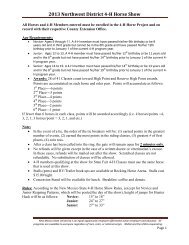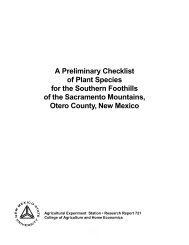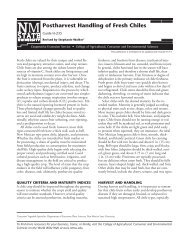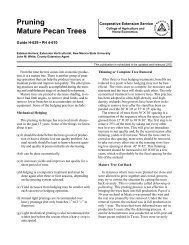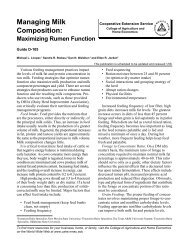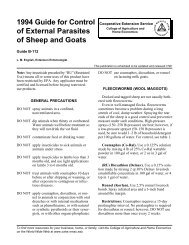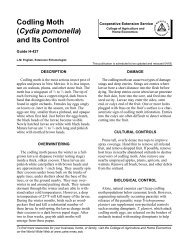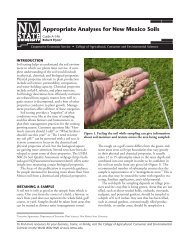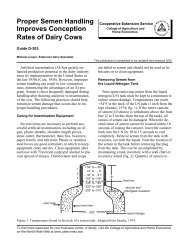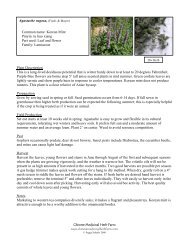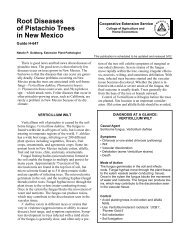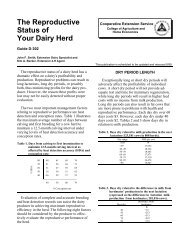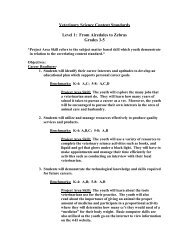Farm Resource Management (FRM) - College of Agricultural ...
Farm Resource Management (FRM) - College of Agricultural ...
Farm Resource Management (FRM) - College of Agricultural ...
You also want an ePaper? Increase the reach of your titles
YUMPU automatically turns print PDFs into web optimized ePapers that Google loves.
AWATT <strong>Farm</strong> <strong>Resource</strong> <strong>Management</strong> Training ManualCOVER CROPS PROVIDE MORE THAN NITROGEN CYCLINGCover crops (Egyptian clover) help bring other nutrients back into the upper soil pr<strong>of</strong>ile fromdeep soil layers. Calcium and potassium are two macronutrients with a tendency to travel withwater, though not generally on the express route with N. These nutrients can be brought upfrom deeper soil layers by any deep-rooted cover crop. The nutrients are then released backinto the active organic matter when the cover crop dies and decomposes.LEGUMINOUS COVER CROPS CAN ADD NITROGEN THROUGH NODULATIONOne <strong>of</strong> nature‘s most gracious gifts to plants and soil is the way that legumes, with the help <strong>of</strong>rhizobial bacteria, can add nitrogen to enrich soil.With the help <strong>of</strong> nitrogen-fixing bacteria, legume cover crops can supply some or all <strong>of</strong> thenitrogen needed by succeeding crops. This nitrogen-producing team can‘t do the job rightunless the correct bacterial inoculant is matched with your legume cover crop species. Onlyparticular strains <strong>of</strong> rhizobia provide optimum nitrogen production for each group <strong>of</strong> legumes. Iflegume roots don‘t encounter their ideal bacterial match, they work with the best strains theycan find, but they do not work as efficiently together and they produce less nitrogen.Like other plants, legumes need nitrogen to grow. They can take it from the soil if enough ispresent in forms they can use. Legume roots also seek out specific strains <strong>of</strong> soil-dwellingbacteria that can ―fix‖ nitrogen gas from the air for use by the plant. While many kinds <strong>of</strong>bacteria compete for space on legume roots, the root tissues will only begin this symbioticnitrogen-fixing process when they encounter a specific species <strong>of</strong> rhizobium bacteria. Onlyparticular strains <strong>of</strong> rhizobia provide optimum nitrogen production for each group <strong>of</strong> legumes.Egyptian clover is a heavy nitrogen producer and the least winter-hardy <strong>of</strong> all true annualclovers. This makes it an ideal legume cover before corn or other nitrogen-demanding crops inAfghanistan. Egyptian clover draws down soil nitrogen early in its cycle. Once soil reserves areused up, it can fix 100 to 200 lb N/acre or more.Afghanistan Water, Agriculture and Technology Transfer Program 17



